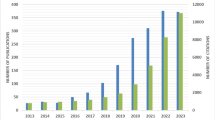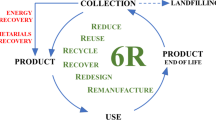Abstract
The print industry has observed an exponential growth over the last decade. A shift from plastics to paper has been observed in the packaging industry due to its sustainability. The gravure process dominates the packaging industry because of long runs and high print precision. This work focuses on the effect of gravure process parameters on print mottle for 50 GSM (gram/square meters) and 65 GSM (gram/square meters) C1S (coated-one-side) paper. Solid mottle refers to unevenness in print density and occurs due to variations in substrate, ink, and process parameters degrading the print quality, thereby resulting in printed wastage and loss to an organization. The intricate mechanism of ink transfer in the gravure process needs to be studied in depth so as to deliver higher yield and lower print waste. The Stochastic Frequency Distribution Analysis (SFDA) algorithm was used to measure the print mottle. The design of experiments (DOE) was run for gravure process parameters such as line screen, viscosity, press speed, electrostatic assist (ESA) voltage, and air gap (distance between impression roller and charge bar) at varying levels. The experimental data were analyzed through analysis of variance (ANOVA), main plot, and interaction plot. The analysis revealed significance of all process parameters for minimization of solid mottle. The optimized settings showed reduction in solid mottle by 64.68% and 67.78% for 50 GSM and 65 GSM, respectively. A stepwise regression model was developed to predict the print mottle that showed correlation coefficient of 0.912 and 0.938 for 50 GSM and 65 GSM C1S papers. This work could serve as a framework to maintain operating levels of gravure process for minimization of solid mottle.





Similar content being viewed by others
References
Smithers Pira. Available at online source: http://www.smitherspira.com/news/2013/february/flexible-packaging-market-forecast-to-grow-to-2017. Accessed on 25 September 2016
Olsson, R, Yang, L, Stam, J, Lestelius, L, “Effects on Ink Setting in Flexographic Printing: Coating Polarity and Dot Gain.” Nord. Pulp Pap. Res. J., 21 (5) 569–574 (2006)
Bhattacharya, A, Bandhopadhyay, S, Green, P, “Characterizing coated paper surface for modeling apparent dot area of halftone prints.” OSA, 24 (2) 1708–1722 (2016)
Laurent, GG, “Measurement and Prediction Procedures for Printability in Flexography (MP3 Flexo).” Doctoral dissertation, Royal Institute of Technology, Stockholm, Sweden (2002)
Deng, PJ, et al., “Influence of Screen Ruling and Engraving Needle Tip Angle on Ink Transfer for Gravure.” J. Adv. Mater. Res. Print. Packag. Study, 174 215–218 (2011)
Rajala, P, Milosavljevic, N, Kiiskinen, H, Hendrickson, M, “The Effect of the Impingement Air Drying on Print Mottle and Other Coated Paper Properties.” Appl. Therm. Eng., 24 (17) 2527–2536 (2004)
Kawasaki, M, Ishisaki, M, Yoshimoto, Y, “Investigation into the Cause of Print Mottle in Half-tone Dots of Coated Paper: Effect of Optical Dot Gain Non-uniformity.” Tappi J., 63 (11) 1362–1373 (2009)
Kappel, C, Hirn, U, Donoser, M, Bauer, W, “Measurement of Printing Ink Penetration in Uncoated Papers and Its Influence on Print Quality,” 94th Annual Meeting Pulp and Paper Technical Association of Canada, pp. B539–B542 (2008)
Bohlin, E, “Surface and Porous Structure of Pigment Coatings Interactions with Flexographic Ink and Effects on Print Quality.” Dissertation, Faculty of Health Science and Technology, Department of Engineering and Chemical Sciences, Karlstad University, Sweden (2013)
George, HF, Oppenheimer, RH, “Method and Apparatus for Transferring Ink in Gravure Printing.” US Patent 4,697,514, 1987
Rong, X, Pekarovic, J, Pekarovicova, A, “Gravure Printability From Laser and Electromechanically Engraved Cylinder.” International Printing and Graphic Arts Conference, 2004
Siler, SJ, “Rediscover the Color with ESA and Water Based Ink.” Retrieved November 23, 2014 from http://www.hurletron.com/subhtml/pdf/y2k.pdf
Bohan, MFJ, et al., “Effect of Process Parameters on Product Quality of Rotogravure Printing.” Proc. Inst. Mech. Eng. Part B J. Eng. Manuf., 214 (3) 205–219 (2000)
Deshmukh, R, Bhat, N, “The Mechanism of Adhesion and Printability of Plasma Processed PET Films.” J. Mater. Res. Innov., 7 283–290 (2003)
Joshi, AV, Dettke, C, Steingraeber, J, “Effect of Electrostatic Assist on Voids and Dot Skips Reduction in Shrink PVC Film.” J. Coat. Technol. Res., 13 (2) 375–383 (2016)
Joshi, AV, “Effect of Electrostatic Assist and Gravure Process Parameters on Voids and Dot Skips Reduction in Shrink PVC Film.” J. Coat. Technol. Res., 13 (3) 527–534 (2016)
Wiesemann, R, “What in the World Is Newtonian Fluid & Why is It Important to Me.” GravurEzine, 4 (5) 14–17 (2009)
Li, Y, He, B, “Characterization of Ink Pigment Penetration and Distribution Related to Surface Topography of Paper Using Confocal Laser Scanning Microscopy.” BioResources, 6 (3) 2690–2702 (2011)
Fardim, P, “Paper and Surface Chemistry—Part 2—Coating and Printability.” Instituto de Quimica, Universidade Estadual de Campinans, SP, Brazil, 9 34–45 (2002)
Rosenberger, R, Clark, D, Drake, D, “Back-Trap and Half-Tone Mottle Measurement with Stochastic Frequency Distribution Analysis.” Available from: http://www.verityia.com/wp-content/uploads/2015/11/mottle.pdf. Assessed 10 September 2016
Rosenberger, RR, “Stochastic Frequency Distribution Analysis as Applied to Mottle Measurement.” Available from: http://www.verityia.com/wpcontent/uploads/2015/11/stochastic-frequency.pdf. Assessed 10 September 2016
Rosenberger, RR, “Gloss Mottle Measurement: Black, Dark Printed Areas and Wet Trap.” Available from: http://www.verityia.com/wp-content/uploads/2015/11/gloss-mottle-measurements.pdf. Accessed 10 September 2016
Fahlcrantz, CM, Johansson, PA, Aslund, P, “The Influence of Mean Reflectance on Perceived Print Mottle.” J. Imaging Sci. Technol., 47 (1) 54–59 (2003)
Liu, GD, Zhang, MY, Liang, QP, “Study on the Assessment Method of Print Mottle Using Discrete Wavelet Analysis.” Appl. Mech. Mater., 262 177–180 (2013)
Bernie, J, Patrick, H, Sutton, P, Douglas, M, “How the Components of Formation of Fine Paper Affect Printability for Different Printing Processes.” TAPPI Paper Summit, 2002
Teleman, A, Christiansson, H, Johansson, PÅ, Fahlcrantz, CM, Lindberg, S, “Correct Measurements of Half-Tone Print Mottle on Flexo Printed Linerboard.” STFI_Packforsk Report No. 39 (2005)
Author information
Authors and Affiliations
Corresponding author
Rights and permissions
About this article
Cite this article
Joshi, A.V. Regression modeling of solid mottle in coated papers. J Coat Technol Res 14, 1447–1456 (2017). https://doi.org/10.1007/s11998-017-9967-9
Published:
Issue Date:
DOI: https://doi.org/10.1007/s11998-017-9967-9




